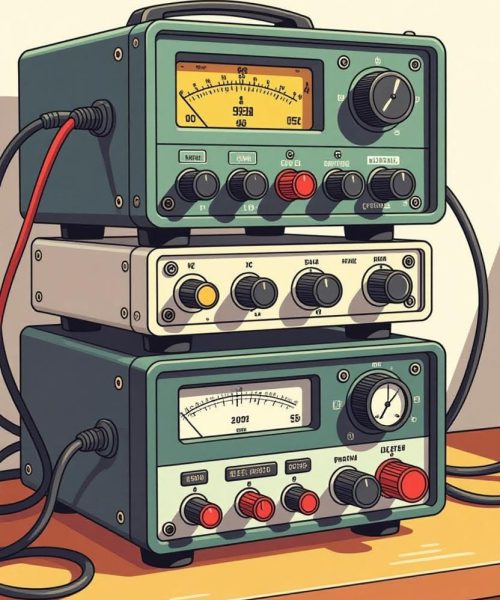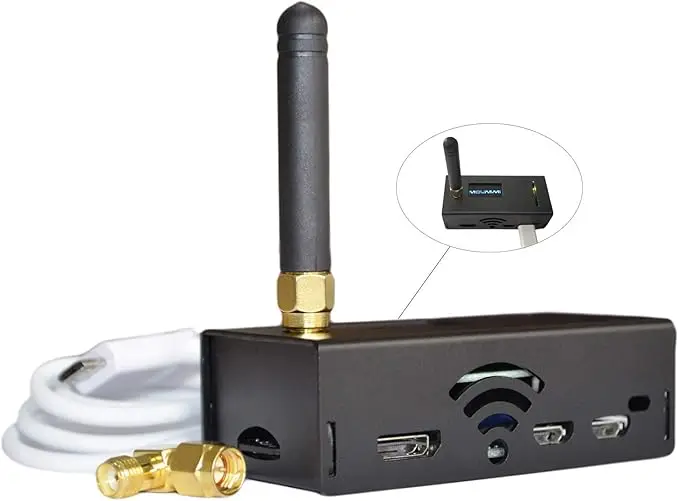
The journey into amateur radio often begins with excitement about radios and antennas, but seasoned operators know that a reliable power supply forms the foundation of any successful station. Whether you’re setting up your first shack or upgrading existing equipment, understanding power supply basics and options will help you make informed decisions that affect every aspect of your station’s performance.
Why Your Power Supply Matters More Than You Think
Modern amateur radio transceivers are sophisticated pieces of equipment that demand clean, stable DC power to perform at their best. While that new 100-watt transceiver might be the star of your station, it’s only as good as the power feeding it. A quality power supply protects your investment, ensures optimal performance, and prevents the mysterious intermittent problems that plague stations with inadequate power systems.
Most home-based amateur transceivers require 13.8 volts DC, mimicking a vehicle’s electrical system when the engine is running. This standardization means one properly sized power supply can run multiple pieces of equipment, from your primary transceiver to accessories like antenna tuners, TNCs, and lighting. The key lies in understanding your actual power requirements and choosing a supply that meets them with appropriate headroom.
Linear vs. Switching: The Great Debate
The amateur radio community has long debated the merits of linear versus switching power supplies, and both technologies have their place in modern stations.
Linear power supplies, like the Astron RS-35A available from DX Engineering, use a large transformer and filtering capacitors to convert AC to DC. These supplies excel at providing extremely clean power with virtually no radio frequency interference. The downside? They’re heavy, generate significant heat, and typically achieve only 50-60% efficiency. However, for operators prioritizing absolute minimal noise and maximum reliability, linear supplies remain the gold standard.
Switching power supplies represent modern efficiency. Models like the Samlex SEC-1235M from DX Engineering weigh a fraction of comparable linear supplies while achieving 85-90% efficiency. They generate less heat and often include advanced protection features. The trade-off comes in potential RF noise generation, though quality modern switching supplies have largely eliminated this concern through better filtering and shielding.
Calculating Your Power Requirements
Determining necessary power supply capacity requires understanding both continuous and peak current demands. Start with your transceiver’s specifications – a 100-watt radio typically draws 20-23 amps on transmit at full power. Add the receive current (usually 2-3 amps), then factor in additional equipment like rotator controllers, packet modems, or cooling fans.
Here’s the crucial part: transceivers draw current in peaks during transmission, especially with SSB operation. Your power supply must handle these peaks without voltage sag. Industry practice suggests choosing a power supply rated for at least 50% above your calculated peak demand. This headroom ensures voltage stability during transmission peaks and extends component life by avoiding constant maximum loading.
For a typical 100-watt station with accessories, a 35-amp continuous duty supply provides comfortable margins. If you plan to expand or run multiple radios simultaneously, consider stepping up to 50 amps or more.
Features That Make a Difference
Modern power supplies offer features that enhance both performance and safety. Adjustable voltage output, typically ranging from 9 to 15 volts, allows you to compensate for voltage drop in cables or match specific equipment requirements. The MFJ-4245MV, for instance, provides front-panel voltage adjustment with digital metering, making it easy to set and monitor your output precisely.
Over-voltage protection prevents equipment damage if the supply fails, while current limiting and fold-back protection guard against short circuits. Temperature-controlled cooling fans reduce noise by running only when needed, though some operators prefer always-on fans for consistent background noise rather than intermittent activation.
Multiple output connections prove invaluable as stations grow. Power supplies like the Alinco DM-330MVT offer both front and rear binding posts plus cigarette lighter sockets, accommodating various connection types without external distribution blocks.
Installation Best Practices
Proper installation maximizes power supply performance and safety. Position your supply where it receives adequate ventilation – both linear and switching supplies generate heat that must be dissipated. Never block ventilation openings or stack equipment directly on top of power supplies.
Use appropriately sized DC cables to minimize voltage drop. For a 20-amp load over a 6-foot run, 10 AWG wire is minimum, though 8 AWG provides better margin. Always fuse connections at both the power supply and radio ends, using values that protect the wire while avoiding nuisance trips during normal operation.
Connect your power supply to a dedicated AC circuit when possible, avoiding circuits shared with motors, dimmers, or other noise sources. A quality surge protector provides additional protection against power line disturbances that could damage both your supply and connected equipment.
Mobile and Portable Considerations
While base station supplies dominate home shacks, portable operation presents unique requirements. Compact switching supplies like the Powerwerx SS-30DV deliver full power in packages small enough for field day or emergency deployment. These supplies often include Anderson Powerpole connectors, the ARES/RACES standard for emergency communications.
Battery-based systems offer ultimate portability and backup capability. Deep-cycle AGM or LiFePO4 batteries paired with appropriate charging systems provide silent, interference-free power for portable or emergency operations. Products like the Bioenno Power 12V, 40Ah LiFePO4 battery available through DX Engineering weigh dramatically less than lead-acid equivalents while providing similar capacity.
Making Your Choice
Selecting the right power supply balances multiple factors: budget, noise tolerance, space constraints, and future expansion plans. For new operators building their first station, a quality 35-amp switching supply from respected manufacturers like Samlex or Alinco provides excellent value and performance. These supplies handle typical 100-watt transceivers with room for growth while maintaining reasonable size and cost.
Serious contesters and DXers might prefer linear supplies for absolute minimum noise, accepting the weight and heat generation as worthwhile trade-offs. The Astron RS-50A, a 50-amp continuous duty linear supply, represents this category’s pinnacle, providing rock-solid power for the most demanding stations.
Consider purchasing from reputable amateur radio dealers who understand our unique requirements and can provide technical support. While industrial supplies might seem attractive, amateur radio-specific models include features like appropriate voltage ranges and RF filtering that general-purpose supplies often lack.
Looking Forward
Your power supply investment will likely outlast several transceivers, making quality worth the initial expense. A properly sized, well-maintained supply provides years of reliable service while protecting your equipment investment. Whether you choose linear or switching technology, prioritize adequate capacity, protection features, and appropriate ventilation.
Remember that your power supply forms the foundation of your station. Just as a house built on sand cannot stand, a station built on inadequate power will never achieve its potential. Take time to understand your requirements, invest appropriately, and your power supply will provide the stable platform necessary for years of successful operation.
The beauty of amateur radio lies not in any single component but in how everything works together as a system. Your power supply might not be glamorous, but it’s the steady heartbeat that keeps your station alive and on the air, ready for that next exciting contact or emergency communication when it matters most.
Affiliate Disclosure:
“Just so you know, some of the links on this page are affiliate links. This means if you decide to make a purchase through one of those links, I might earn a small commission at no extra cost to you. Your support helps keep this content going—thank you!”

